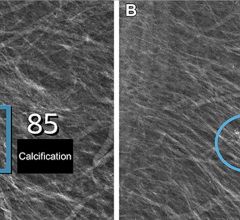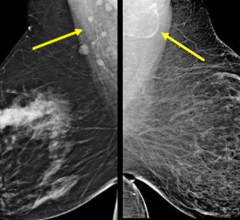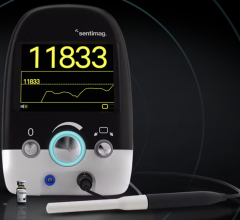September 5, 2007 - A study in the August 11 issue of The Lancet concludes that screening for breast cancer with magnetic resonance imaging (MRI) could improve the ability to detect ductal carcinoma in situ (DCIS), especially high-grade DCIS.
DCIS is a form of preinvasive breast cancer. High-grade DCIS grows quickly and is more likely to develop into invasive breast cancer.
Mammography is the standard method for diagnosing DCIS, which accounts for 20% of diagnosed breast cancers. Left untreated, DCIS could progress over several years to a high-grade invasive breast cancer. MRI may be used for screening very high-risk women (such as those with known BRCA mutations) or to evaluate both breasts before surgery at the time of diagnosis. Mammography works by highlighting calcium deposits (calcifications) around the DCIS lesions. MRI works by detecting areas of increased vascularization (growth of blood vessels), which is more commonly found around high-grade DCIS lesions.
In this study, researchers at the University of Bonn (Germany) offered mammography and high-resolution breast MRI to more than 7,000 women. From this group, 167 women had a confirmed diagnosis of DCIS. Researchers found that 93 (56%) of these lesions were visible on mammography and 153 (92%) lesions were found with MRI. Of the 89 lesions that were high-grade DCIS, 87 (98%) were found using MRI compared with 46 (52%) by mammography.
For more information: www.plwc.org


 July 29, 2024
July 29, 2024 








